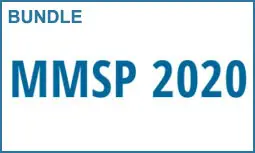Graph-based Deep Learning Analysis and Instance Selection
Keisuke Nonaka, Sarath Shekkizhar, Antonio Ortega
-
Members: FreeSPS
IEEE Members: $11.00
Non-members: $15.00Length: 04:59
24 Sep 2020
While deep learning is a powerful tool for many applications, there has been only limited research about selection of data for training, i.e., instance selection, which enhances deep learning scalability by saving computational resources. This can be attributed in part to the difficulty of interpreting deep learning models. While some graph-based methods have been proposed to improve performance and interpret behavior of deep learning, the instance selection problem has not addressed from this graph perspective. based on a graph obtained by behavior of learning model has not been proposed. In this paper, we analyze the behavior of deep learning outputs by using the K-nearest neighbor (KNN) graph construction. We observe that when a directed KNN graph is constructed, instead of the more conventional undirected KNN, a large number of instances become isolated nodes, i.e., they do not belong to the directed neighborhoods of any other nodes. Based on this we propose two new instance selection methods, based on maximizing and minimizing the instance distribution. In our experiments, the instance selected by the maximizing method shows better accuracy results than the conventional method. Furthermore, the results show that robustness of our method to changing CNNs settings and the analysis is reliable.



